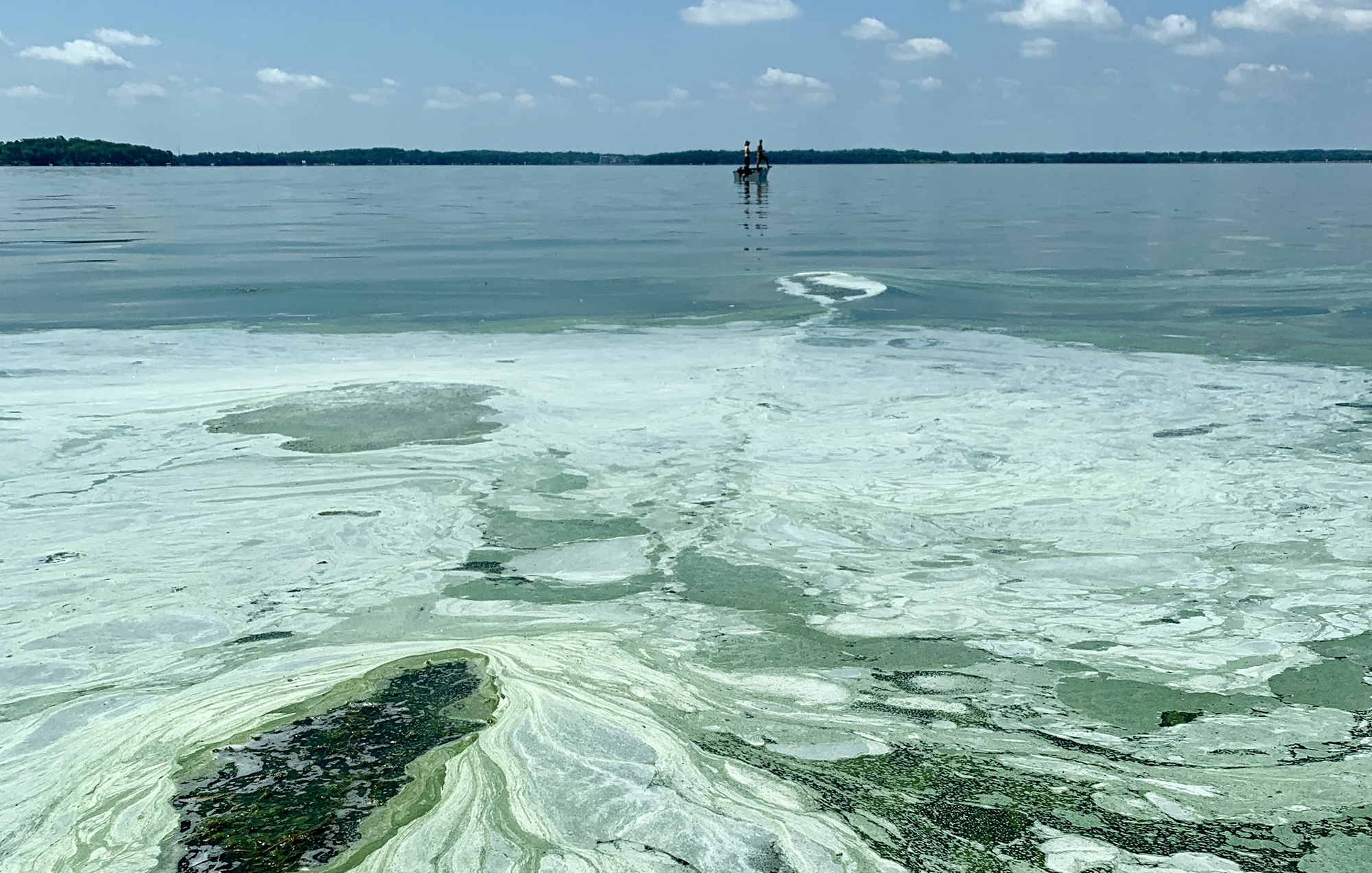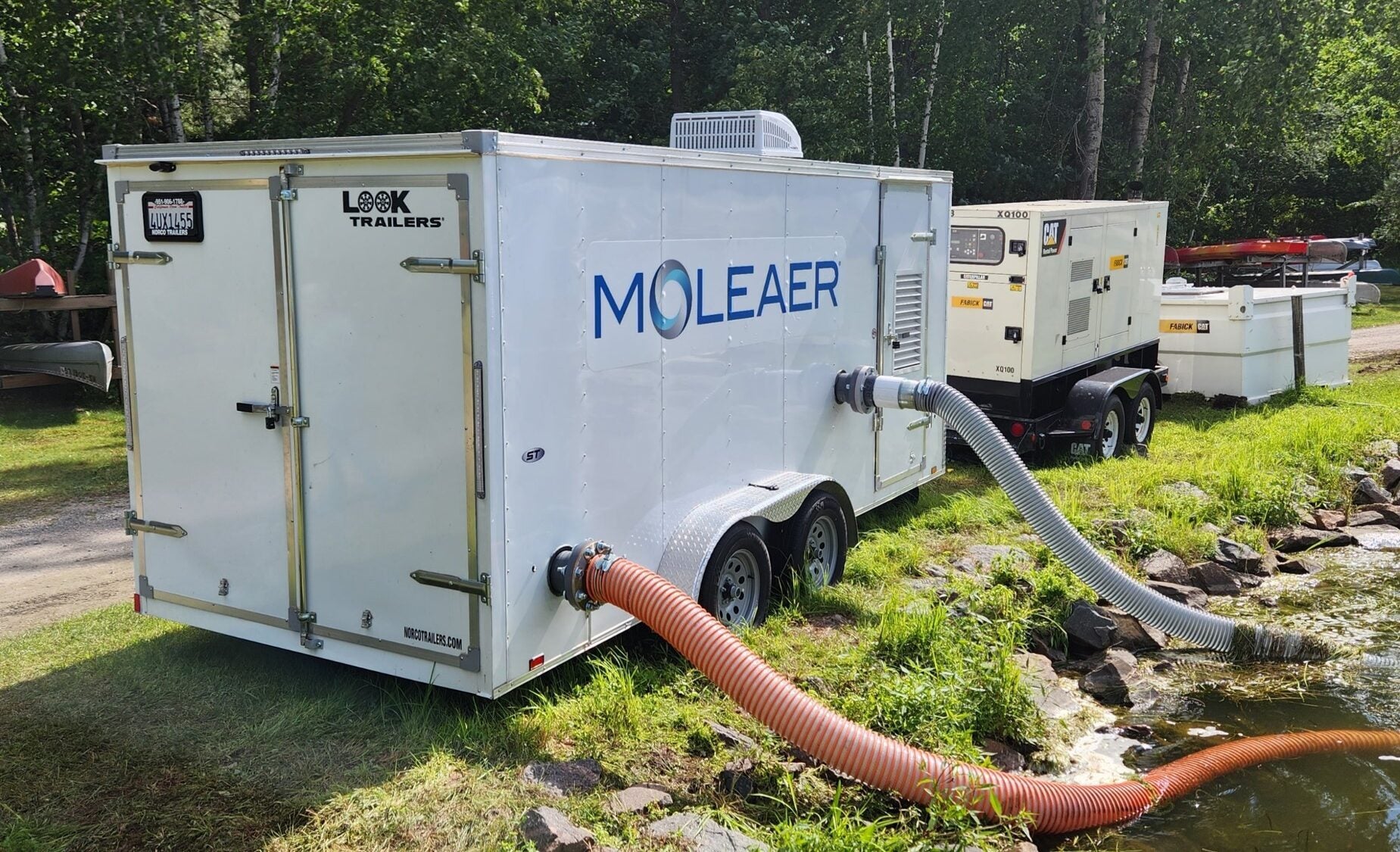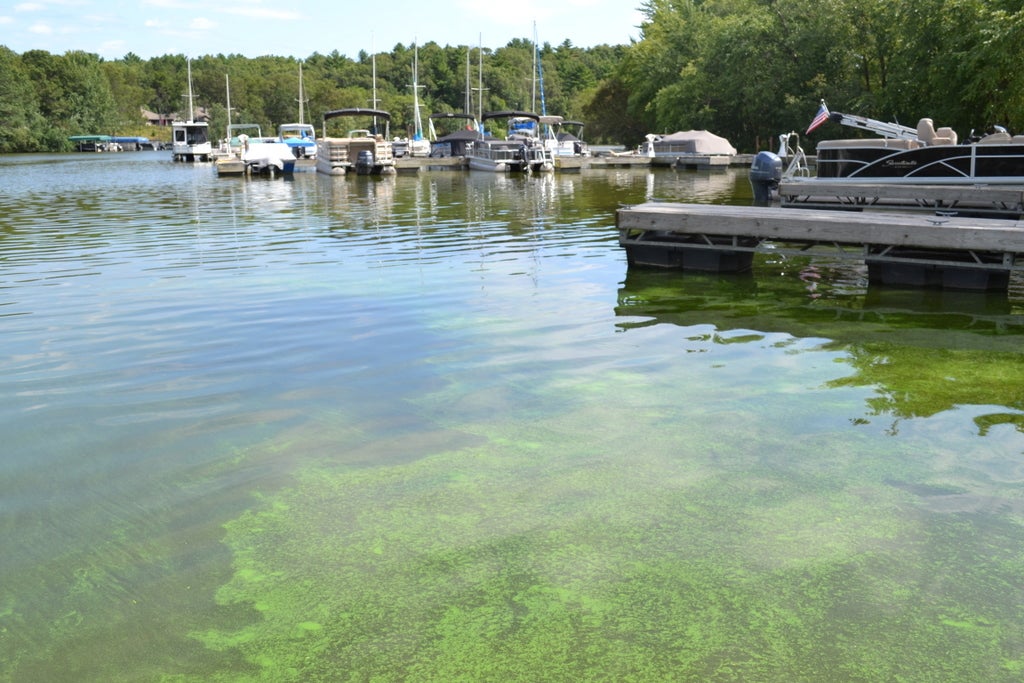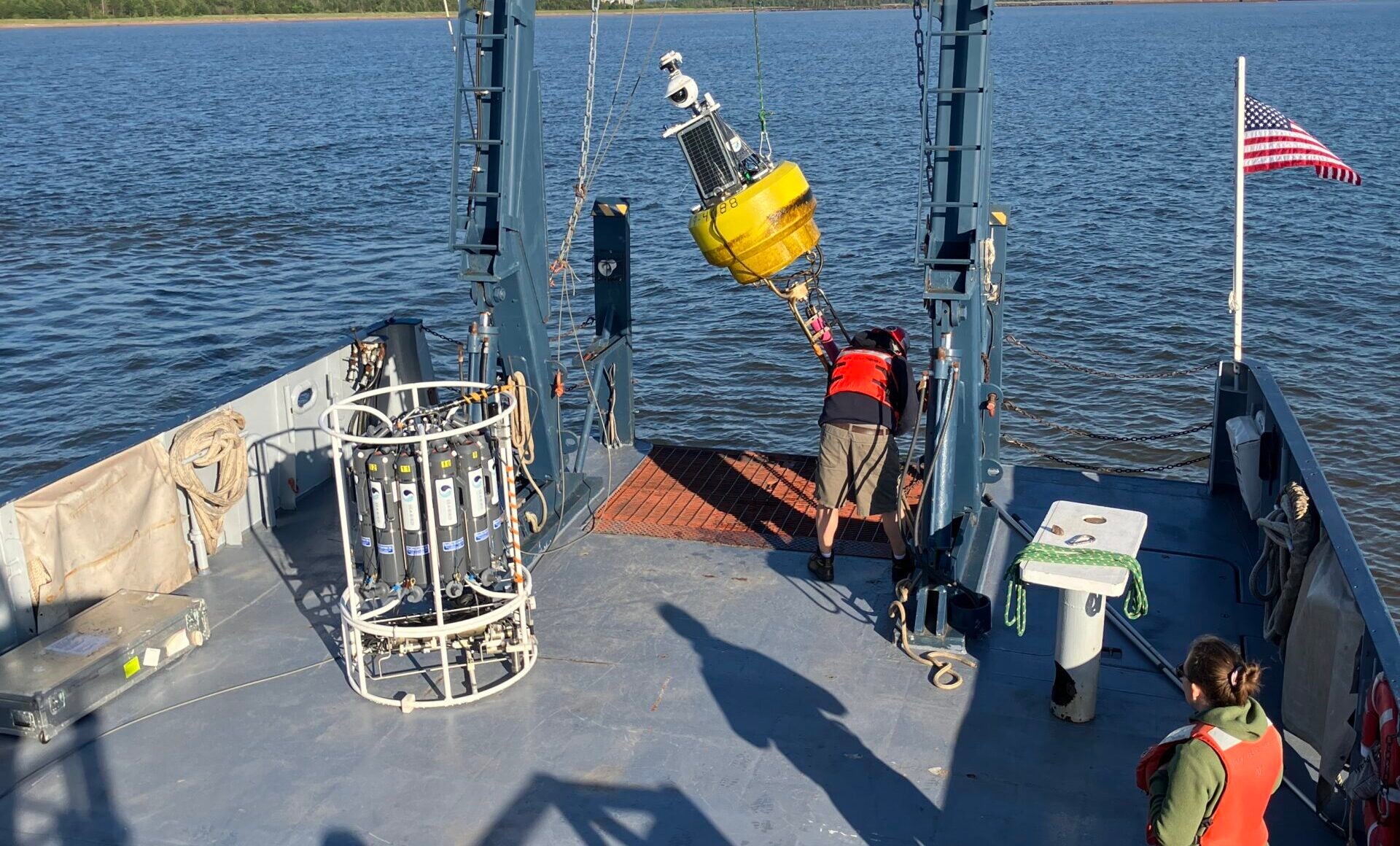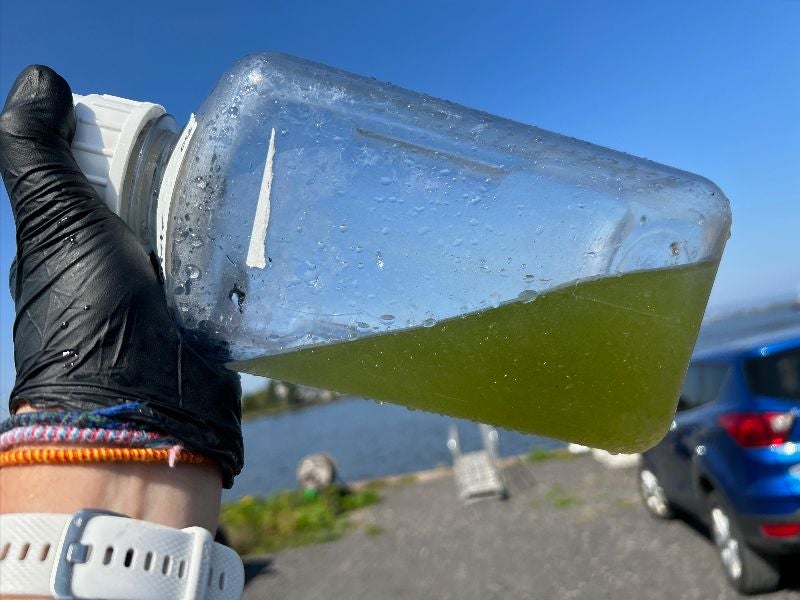Reports of algal blooms and related illnesses have surpassed last year’s total on Wisconsin lakes, and state environmental and health regulators say more could emerge this fall.
The Wisconsin Department of Natural Resources had received 195 reports of blooms as of Sept. 9, exceeding the 178 reports received last year.
The agency confirmed around 72 percent were cyanobacteria, or blue-green algae blooms, according to Gina LaLiberte, the DNR’s harmful algal bloom coordinator. The blooms often look like pea soup or green and blue paint. LaLiberte attributed the increase to more awareness and calm, mirror-like conditions in August.
“If you’ve got enough nutrients in the lake to grow a lot of cyanobacteria, they all float to the surface and form that surface accumulation as a bloom,” LaLiberte said.
Heavy rains earlier this summer may have also carried more nutrients into lakes that set the stage for blooms to form, said Jordan Murray, harmful algal bloom epidemiologist with the state Department of Health Services. Murray said shallow, stagnant lakes along with those that receive runoff from farm fields and lawns are more prone to blue-green algae blooms.
“The nutrients that get into the water can fuel the blue-green algae to grow and reproduce and potentially produce toxins that can make people sick,” Murray said.
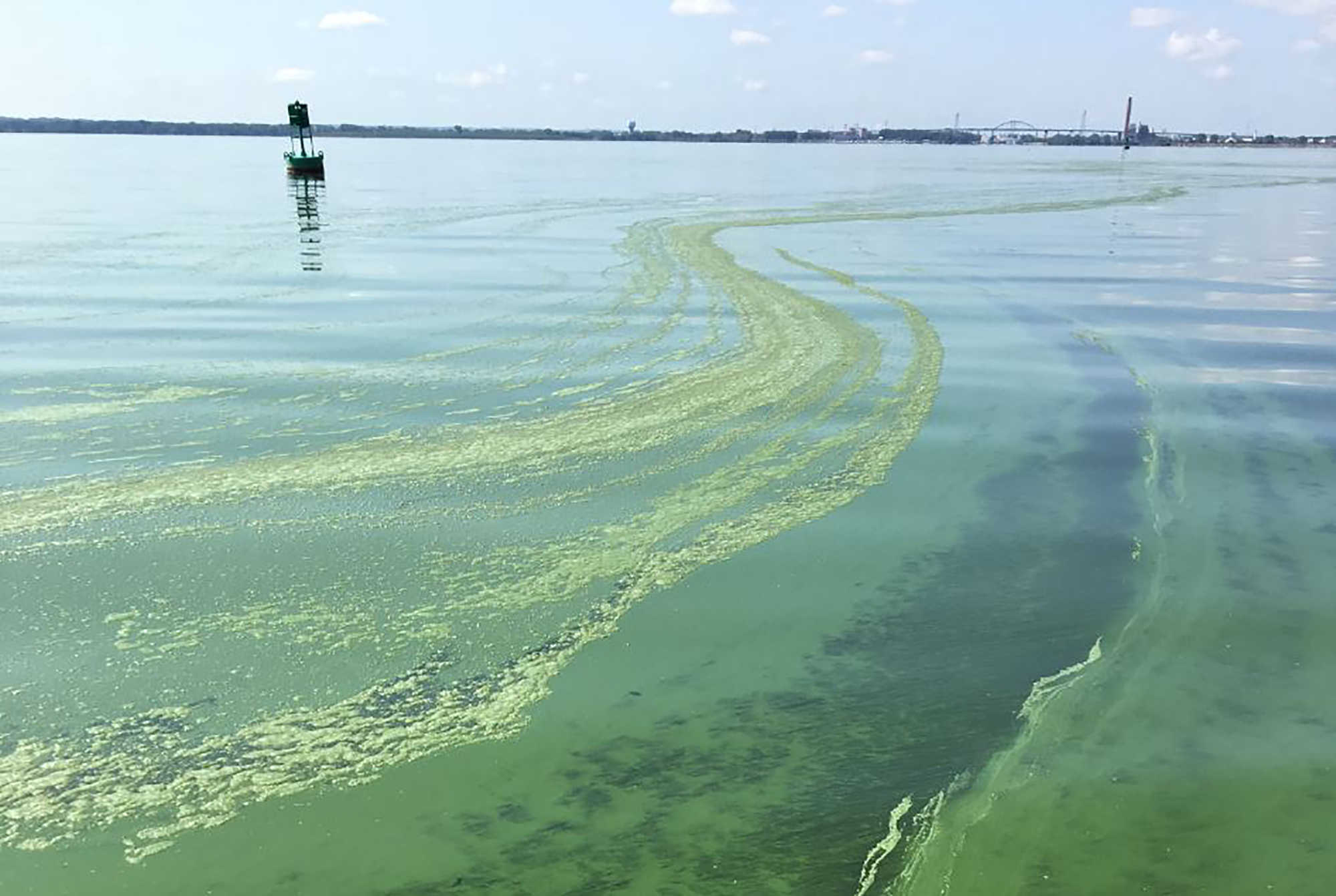
Reports of bloom-related illnesses on the rise this year
News with a little more humanity
WPR’s “Wisconsin Today” newsletter keeps you connected to the state you love without feeling overwhelmed. No paywall. No agenda. No corporate filter.
As of last week, state health officials had received 34 reports of bloom-related illnesses, including one seagull that died. That’s slightly more than the 29 cases investigated last year. In both years, 10 cases were linked to blue-green algae exposure.
The most common symptoms reported included abdominal pain, diarrhea and vomiting in addition to headaches and sore throats. On average, state health officials receive about 25 reports of bloom-related illnesses annually. Over the last six years, Murray said 75 percent of cases involved children who are more prone to exposure.
While the end of summer draws near, Murray noted the bloom season is not quite over. The state received reports of bloom-related illnesses in October last year.
Harmful blooms often show up on the state’s large reservoirs, lakes or river systems. LaLiberte said that includes Lake Winnebago, Castle Rock and Petenwell Lakes on the Wisconsin River and Lakes Tainter and Menomin on the Red Cedar River in western Wisconsin.
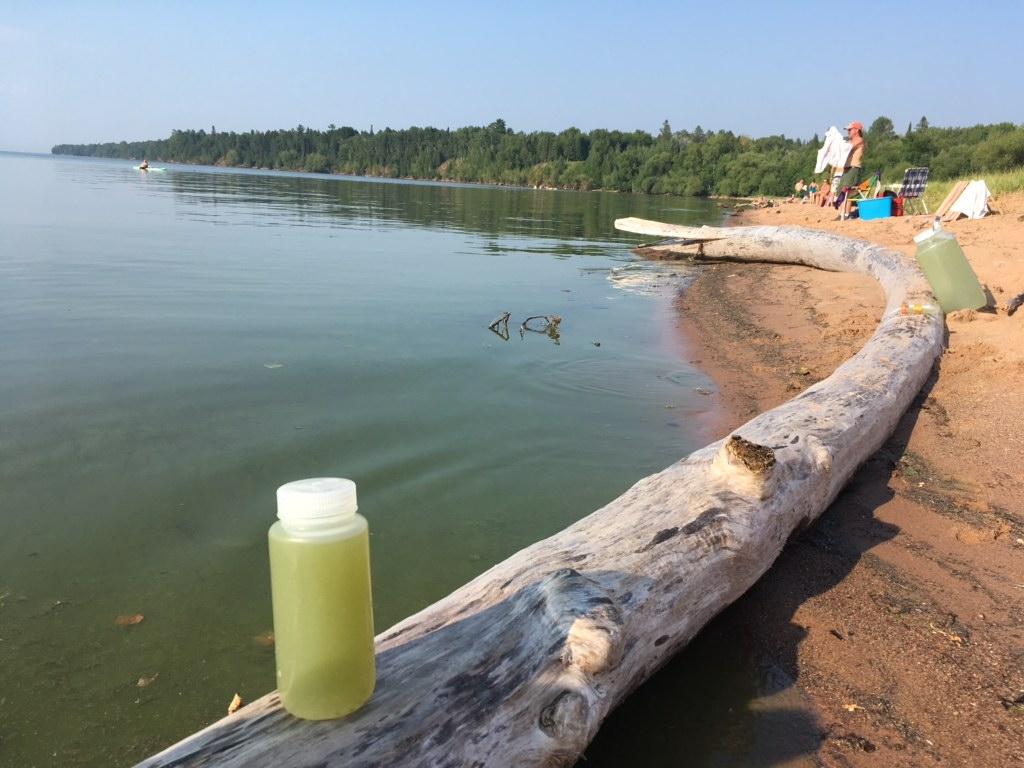
Multiple blooms reported on Lake Superior in August
Lake Superior also had multiple blooms this year in the Duluth-Superior area and Apostle Islands National Lakeshore, according to the DNR. In the Twin Ports, one event spurred four blooms in early August, and another bloom occurred in the inner harbor of Superior at the end of the month along with a bloom at Little Sand Bay in the Apostle Islands.
“As is the case with a lot of these Lake Superior blooms, (they) tend to be very, very short-lived,” LaLiberte said.
Short-lived, but not uncommon. Known for its cold waters, Lake Superior is one of the fastest warming lakes worldwide. Todd Miller, an environmental health sciences professor at the University of Wisconsin-Milwaukee, noted during a recent panel discussion that large blooms have been observed on the lake in the last decade.
“We think this is due to the warming water temperatures and also extreme storm events that are causing erosion, wiping out roads, bridges, dams and just introducing a lot of suspended solids that probably contain phosphorus and nitrogen that could fuel algal blooms,” Miller said.
Climate change has led to warmer waters, less ice cover and longer growing seasons. Since 2012, most blooms on the lake have occurred during the warmest water temperatures in late summer. Earlier this month, researchers launched a buoy in the nearshore waters of Lake Superior to track water quality and blooms.
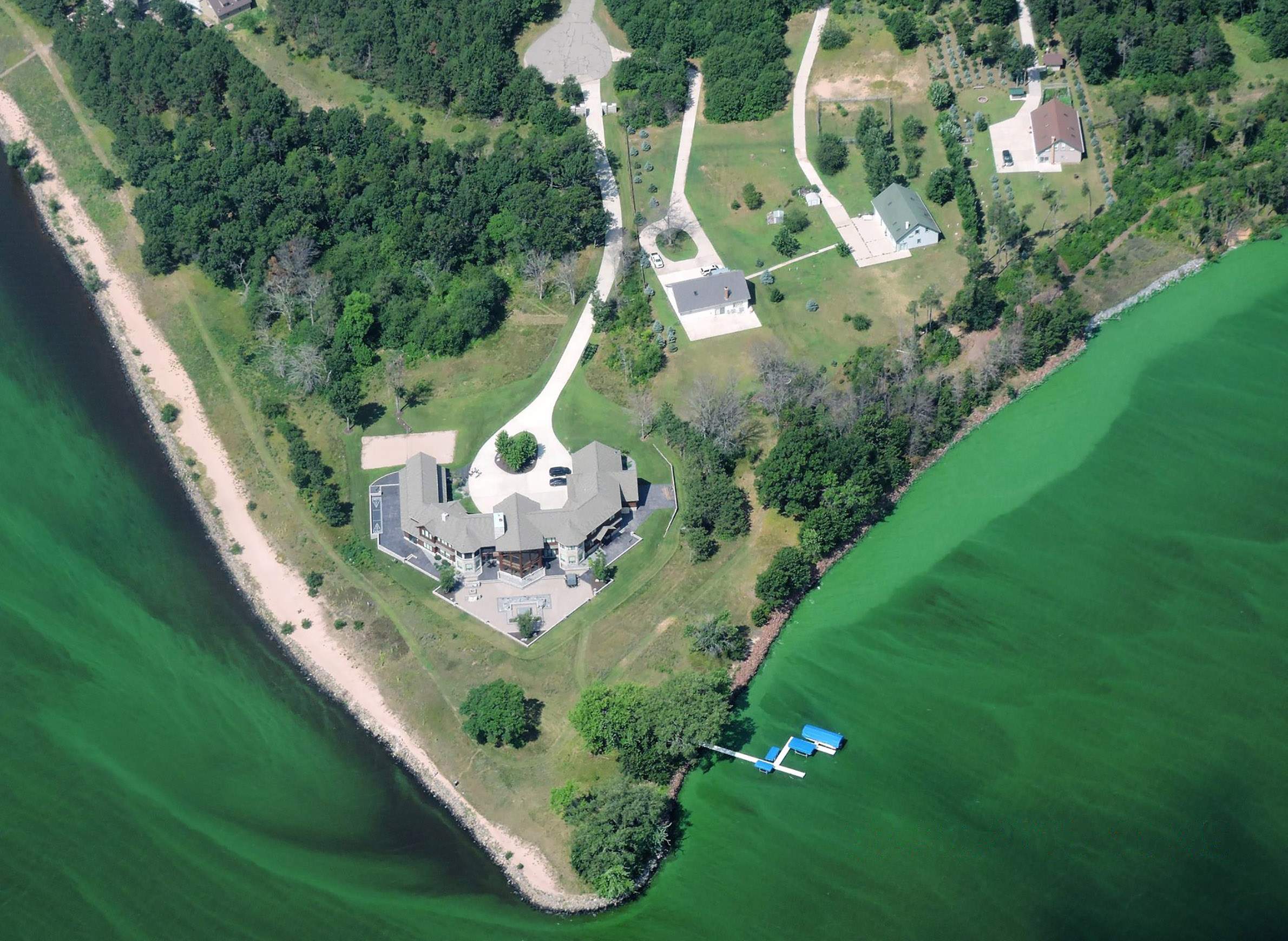
State officials say monitoring of blooms is limited
As reports have grown more frequent, one of the biggest challenges facing state agencies is a lack of monitoring.
LaLiberte and Murray said the state doesn’t have much funding to collect samples from lakes or people to track health and environmental effects. According to federal figures, harmful blooms cost an estimated $10-$100 million on average each year. Related illnesses can cost between $86 to $14,600 per illness, according to the Centers for Disease Control and Prevention.
Low levels of blue-green algae toxins have also been found in food products like spirulina and drinking water. Miller said the only way to ensure regular monitoring is if it’s mandated.
“When I tell people what these things can do to the human body, and I say that they can occur in finished drinking water, and then I tell them that they’re not monitored at all, people are quite shocked,” Miller said.
The DNR confirmed algal toxins in drinking water aren’t regulated by the state or the Safe Drinking Water Act. The agency has worked with water systems vulnerable to harmful blooms, including communities that draw from Lake Winnebago.
Studies found treatment methods used by Appleton, Neenah, Oshkosh and Menasha reduced or removed toxins. The DNR added that systems drawing from surface water in Wisconsin reported no toxins in more recent monitoring required by federal environmental regulators.
State environmental and health officials urge people to avoid swimming or recreating in water with scum on the surface. People can submit reports of blooms on Lake Superior or contact the DNR about blooms on inland lakes at DNRHAB@wisconsin.gov. Bloom-related illnesses can be reported to DHS through an online survey.
Wisconsin Public Radio, © Copyright 2025, Board of Regents of the University of Wisconsin System and Wisconsin Educational Communications Board.

